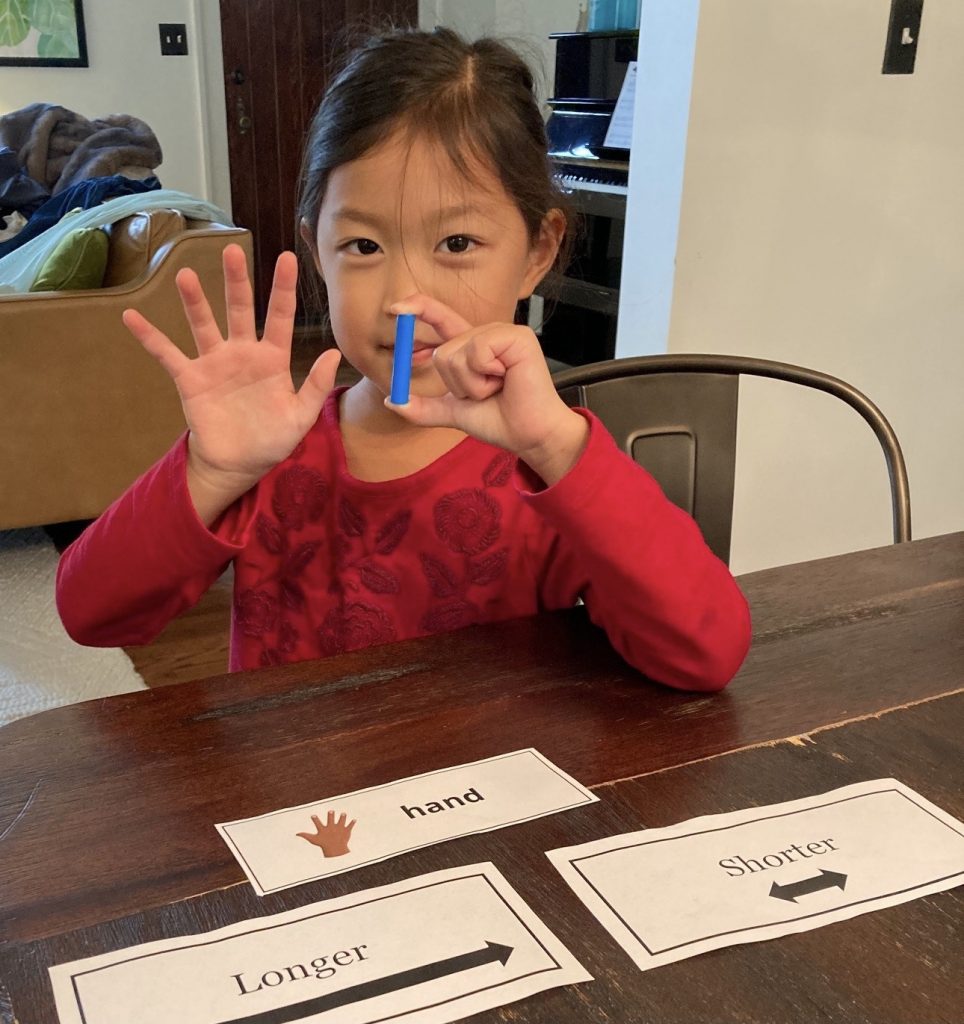1+
Low teacher engagement
Materials
- Longer and shorter T-chart or longer and shorter label cards:
- One set of body part cards
- Optional: One basket of one to five objects of varying length for comparison: Use this option if you don’t want students to move around the room to find their own comparison objects
Setup — Less than 5 minutes
- Create the T-chart on a table or floor, using the “Longer” or “Shorter” cards if desired. Set out the body part cards face down in a pile or stack.
- Body part cards: use the examples or create your own. The body part cards should show pictures of different body parts that children can easily compare to other objects.
- Objects: children can get these from around the room or from a specific area of the room (the block area, for instance), or you can supply a basket of objects.
Instructions
- Make a T-chart on a table or floor with tape. Label one side “longer” and the other side “shorter”, or use one of the charts provided. Or put “longer” and “shorter” buckets out for children to sort into.
- A child pulls one body part card from the pile of cards. The body part card tells them what part of their own body they will be comparing to objects.
- The child then finds at least one object that is longer than the body part indicated in the body card and one object that is shorter than that body part.
- The child puts each object on the corresponding section of the T-chart.

Checks for Understanding
To deepen children’s learning about early math concepts, talk and ask questions while doing this activity together. Here are some examples to get you started.
- “Is this object longer/shorter than or the same length as your arm?”
- “Is that pen longer than your finger?”
- “You found three objects that are shorter than your arm. Which one is the shortest?”
- “Do you think this will be longer or shorter than your arm?” After comparing the object to their arm: “Which one is longer? Did you guess correctly?”
- “What is something you think will be shorter than your leg?”
Activity Modifications
Once you have tried out the activity, here are some other things you can do. Try these modifications to keep the activity interesting and challenging for students all year.
- If students have difficulty finding objects, use interlocking cubes or blocks to make an object that is longer or shorter.
- To support accurate measurement, the teacher or a peer can help children line up the end points of their body parts and objects.
- Have children find objects based on a partner’s body parts instead of their own.
- Give children an object or have them select an object, then sort the body part cards based on which body parts are longer than the object and which are shorter.
- After children have found several objects during the game, have them order the objects from shortest to longest.
- Choose body parts that require at least two people to measure, such as a whole arm or body.